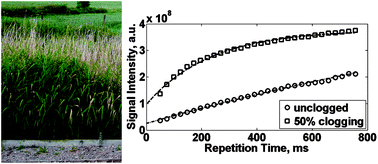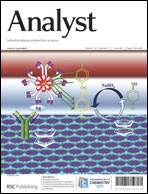Analysis of clogging in constructed wetlands using magnetic resonance
Abstract
In this work we demonstrate the potential of permanent magnet based magnetic resonance sensors to monitor and assess the extent of pore clogging in water filtration systems. The performance of the sensor was tested on artificially clogged gravel substrates and on gravel bed samples from constructed wetlands used to treat wastewater. Data indicate that the spin lattice relaxation time is linearly related to the hydraulic conductivity in such systems. In addition, within biologically active filters we demonstrate the ability to determine the relative ratio of biomass to abiotic solids, a measurement which is not possible using alternative techniques.


 Please wait while we load your content...
Please wait while we load your content...